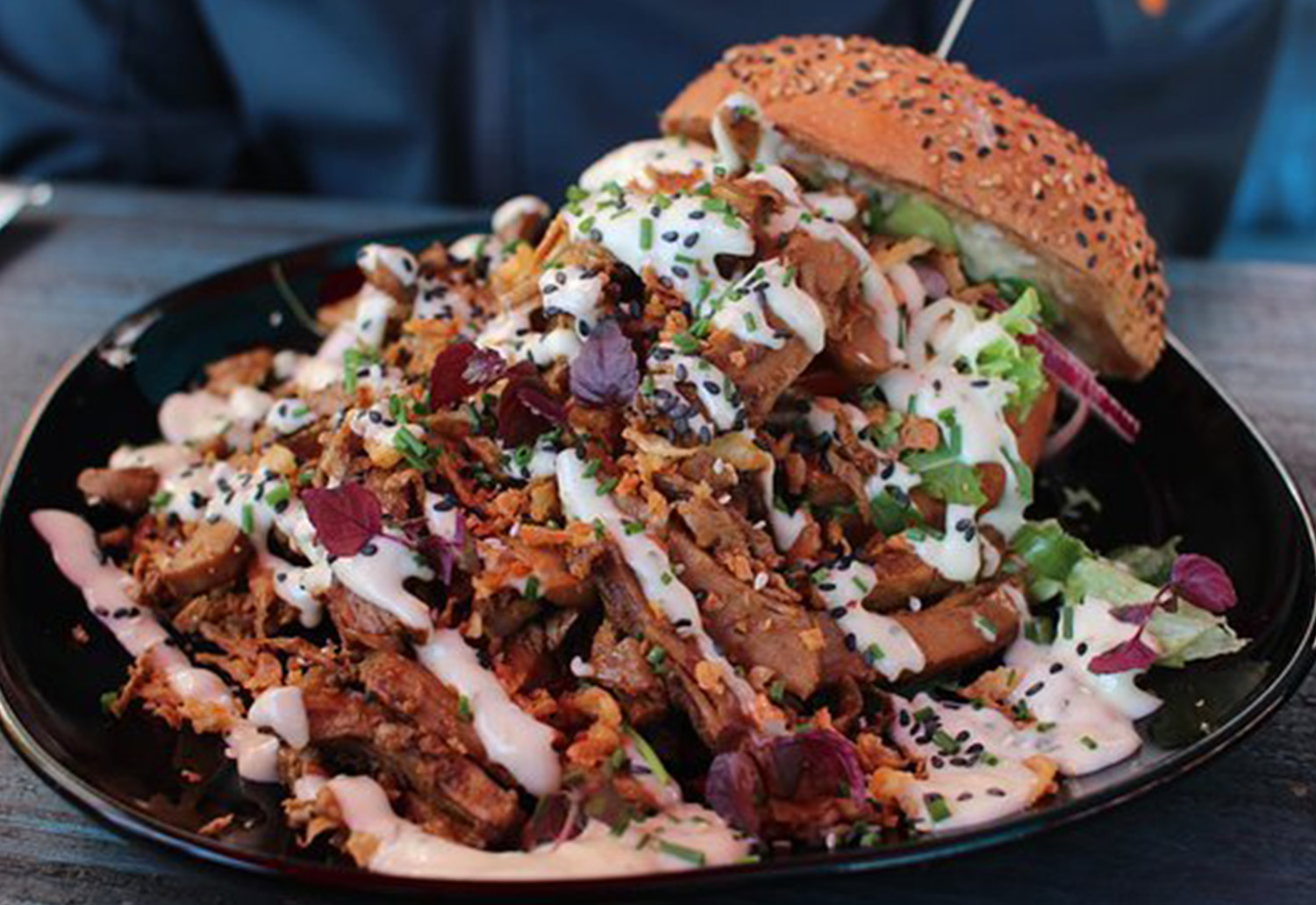There’s a common misconception that vegan = healthy. It’s important to remember that just because a food is made without animal products, that doesn’t make it healthy.
Many vegans eat a diet that’s made up of ultra-processed foods, for example, Oreos, chips, ice cream, and soda. Being a junk food vegan isn’t really different from eating fast food at every meal — especially with the influx of plant-based burgers, sausages, fish, and pretty much any baked good or faux dairy product you can think of are widely available, it’s never been easier to avoid vegetables while eating a strict vegan diet. If your goal is weight loss, meals like that are not the right solution! You can make a beautiful plate full of flavors and colors on a plant-based diet.
Let’s dive into some quick tips for weight loss on a plant-based diet, so you can lose weight and feel AMAZING!
1.Watch your portions
Just like with any diet or eating plan, if you want to avoid weight gain, you must watch your portion sizes. When transitioning to a plant-based diet, it’s not uncommon for some of us to think we can eat an unlimited amount of peanut butter, seeds, whole grains, and potatoes.
While vegan whole foods are full of nutrients, some of them are high in calories. Yes, granola and avocados are calorically dense! Remember consuming these in large quantities can pack in extra calories. Fats contain 9 calories per gram. Carbs and protein contain 4 calories per gram. This means high-fat foods are more calorie-dense. They can also easily be over-consumed. For example, almonds are a great snack when portion-controlled, over-snacking on these, and the calories can quickly add up.
2. Pack your smoothies with veggies
Inspired by those smoothie bowls featuring tropical fruits and nutty granola? While they may look pretty, they probably contain enough calories for your entire day, let alone breakfast!
It’s not uncommon to see a vegan smoothie recipe consisting of a banana, berries, kiwi, avocado, coconut milk, protein powder, nut butter, chocolate – should I go on? If you are a lover of smoothies, add those veggies! Cauliflower and zucchini, for example, are a great addition to make your drink thick and smooth.
And before you go crazy with the peanut butter, coconut, hemp seeds, and avocado choose one healthy fat to add to your smoothie. As mentioned above, it’s also important to watch your portion sizes. Before blending up your ingredients, consider whether you could sit down and eat the ingredients in their whole form. Can you eat one banana, 1/2 cup of berries, 1/2 cup of zucchini, and 1/2 an avocado as your post-workout snack?
3. Be mindful of your oil intake
Oils can give your vegan food an extra lift in flavor, but they also can have high-calorie content. While you don’t want to cut out the fat from a vegan meal plan due to the essential fat-soluble vitamins, you don’t want to be overly liberal with them either. One tablespoon of olive oil contains 120 calories of mostly empty calories. When cooking, try using spray oil, vegetable broth, balsamic vinegar, or soy sauce for sautéing.
If you’re using oil, stick with extra virgin olive oil, avocado, or flaxseed oil and portion control. If you’re trying to reduce your oil intake, try lemon juice, apple cider vinegar, yogurt, or tahini for dressings.
4. Eat mindfully
Mindful eating changes the focus from calorie counting to how certain foods make you feel. You begin to understand how food is energy and nourishment versus a passive event negated by pleasure.
Limiting distractions also plays a big role in what and how much you consume. When you eat while distracted, you’re more likely to overeat, make poor food choices, and ignore signs of physical discomfort or fullness.
Mindful eating helps you eliminate these distractions, so you are more familiar with your body. This can help you establish a healthy relationship with food and avoid the deprivation-binge cycle.
In the journal Current Obesity Reports, a research study suggests “Positive weight loss results” with mindful eating. Research review concluded: “Increased mindful eating has been shown to help participants gain awareness of their bodies, be more in tune to hunger and satiety, recognize external cues to eat, gain self-compassion, decrease food cravings, decrease problematic eating, and decrease reward-driven eating.”
Slowing down the rate at which we eat food improves satisfaction, so make sure to chew food slowly. If we consume our food too quickly, our body doesn’t have the time to process the signals that we are full, which can result in overeating. Take your time and savor those meals!
5. Assess your movement
While what you eat is important your activity level can help your weight loss and health goals. Also, movement is important for heart health, endorphin release, and mood balance for general healthy living. You don’t need to do high-intensity training to see the benefits, try walking and resistance training.
Finally, remember weight loss, takes time. And there is no hard-fast rule about when you will see results since everyone’s body is different.

